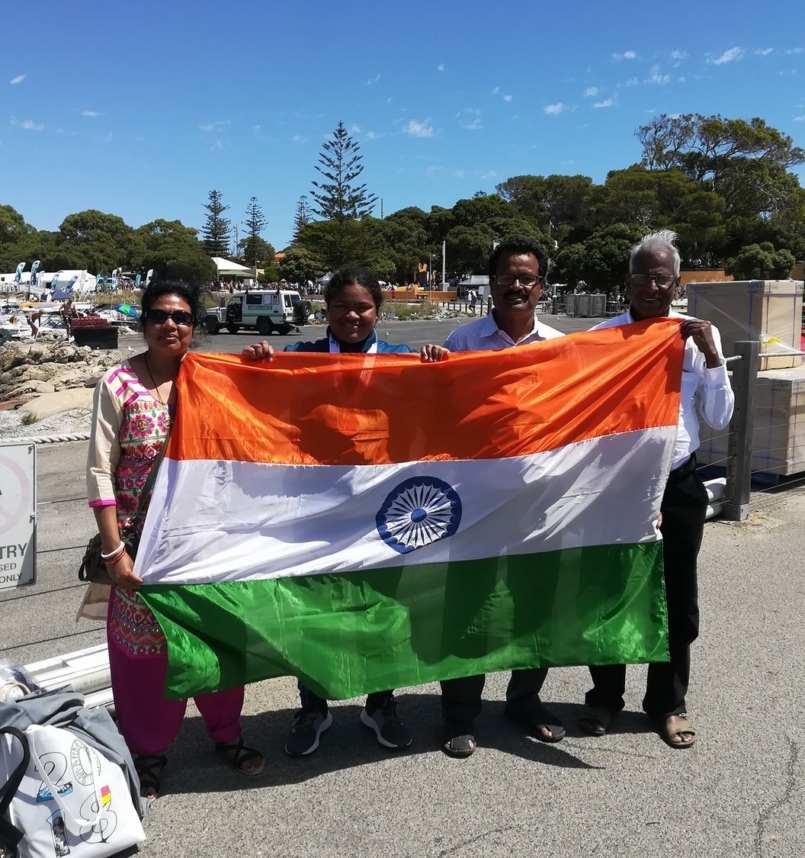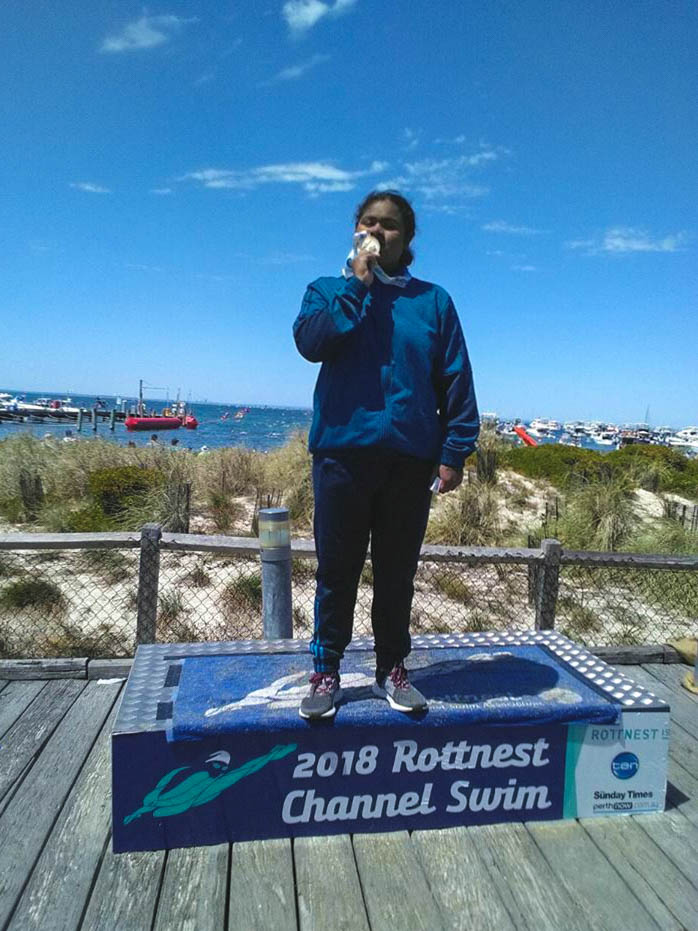Sayani Das

The Rottnest Swim is a 19.7km open-water swim from Cottesloe Beach to Rottnest Island. Playfully nicknamed the ‘Rotto Swim,’ it is one of Western Australia’s most iconic events and one of the biggest open-water swimming events in the world.
Sayani Das is a nineteen-year-old woman from Kolkata in the Indian State of West Bengal. She fell in love with swimming from a young age, learning to swim at one of the few local pools, and practising her technique in the Ganges. Swimming has become two things for her: a way to make her country proud, and a public demonstration that girls can do anything.
I’m Sayani Das. I’m a swimmer and I’m 19. When I was six years old, a swimming pool opened and my father took me there to learn how to swim. In five months of learning, I had done 10 kilometres of swimming in the Ganges. Then I started my swimming life. I won six gold medals in the State Championships, and also participated in the National Championships in India. So I thought, swimming is for me, and I’m for swimming.
In my country, people think that education is the best way to prove yourself in society. But my dad and I, we think that this isn’t true. A sportsman can establish himself or herself too. It’s good. As an Indian, it’s our duty to do something for our country. I think that swimming is something I can do for my country.
When I was born, everyone teased my father; ‘Again, a girl child’. So, he challenged himself that in the future, he would make his two daughters—first become good people, then to become established people in society who would prove that girls can do anything. You know, in India, with girls and boys, it’s a really bad thing. People think that girls should have some education, do some song or dance, then get married. It’s our culture and the way most people think. So, in India I do motivational speaking, especially to girls and women. I tell them it’s not a life to get married and then everything is finished. There are a lot of things to do in life, especially for women and girls.
I don’t get any sponsorship, so my father had to mortgage our house. No one wants to do that—especially not for a girl child…
Preparing for the English Channel, I’ve faced a lot of situations. I don’t get any sponsorship, so my father had to mortgage our house. No one wants to do that—especially not for a girl child—it was very costly for our Indian currency. I was practising my swim—for twelve or thirteen hours, the whole night in winter, and in cold conditions—to prepare myself. When we were ready for the swim in England, my father and I found out that our VISA was rejected. We reapplied, and again it was rejected. The third time we applied, we got our VISA.
When I started practising swimming in England, I faced a lot of problems. The water in India was 38 degrees, but when I started my swimming at Dover, the temperature was 12 degrees. It was really tough for me. Just before I started my swim across the English Channel, the weather was very bad and my swim was cancelled. My pilot said, ‘Sayani, go back to your country. You can’t do your swim.’ I contacted the Channel Swimming Association and asked them, ‘why can’t I swim?’ They said, ‘You are an Indian, you can’t swim in this temperature. It’s really cold.’ I said to them, ‘Please give me a chance. I will prove to you that Indians can do anything.’ So, they gave me permission, and I started my swim on 25 July at 12:55pm.

That was really exciting for me. When I started, the temperature was 17 degrees and comfortable. When I continued and I got close to France, at 9pm the sun set and all of the surrounding areas went dark. In that big ocean, I swam alone. The moon wasn’t there, it was really dark. I had only a little light on my head and a radium stick on my back, that was all. From there, I continued my swim in really cold temperatures—about eight degrees. I couldn’t tolerate it, but my father and my pilot, they encouraged me by saying, ‘Keep swimming, keep swimming! You can do it.’ Finally, at 3:03am, I landed in France. I had become really tired, and I became senseless. Luckily, two French coastal guards rescued me. I was very lucky that day. It was a really precious moment for my life, that I was successful. I wore my Indian national flag back in England, and it was a big moment.
That’s when I decided that I had to cross the Seven Seas. That’s why I’ve come to Rottnest. I’ve always been very interested to come here. Now I’m in Australia! Now I want to cross the Rottnest Channel successfully, for my country, for my India. I’m really excited for the jellyfish, the dolphins, the sharks, and the waves!
Sayani successfully completed a solo crossing of the Rottnest Channel Swim in 6 hours and 42 minutes. She is now back in India training for her next open-water swimming event.
Copyright © 2018 Sayani Das.
This story and corresponding images have been licensed to the Centre for Stories by the Storyteller. For reproduction and distribution of this story/image please contact the Centre for Stories.
This story was originally published on March 19, 2018.